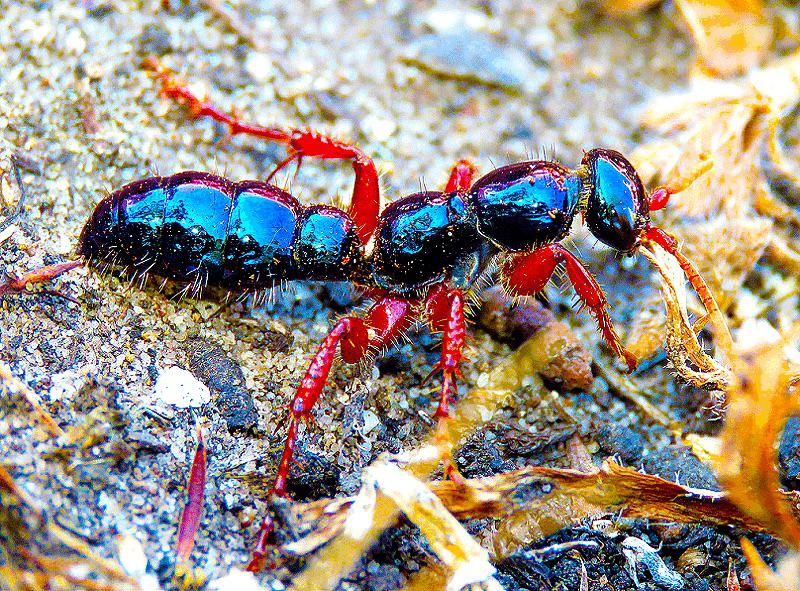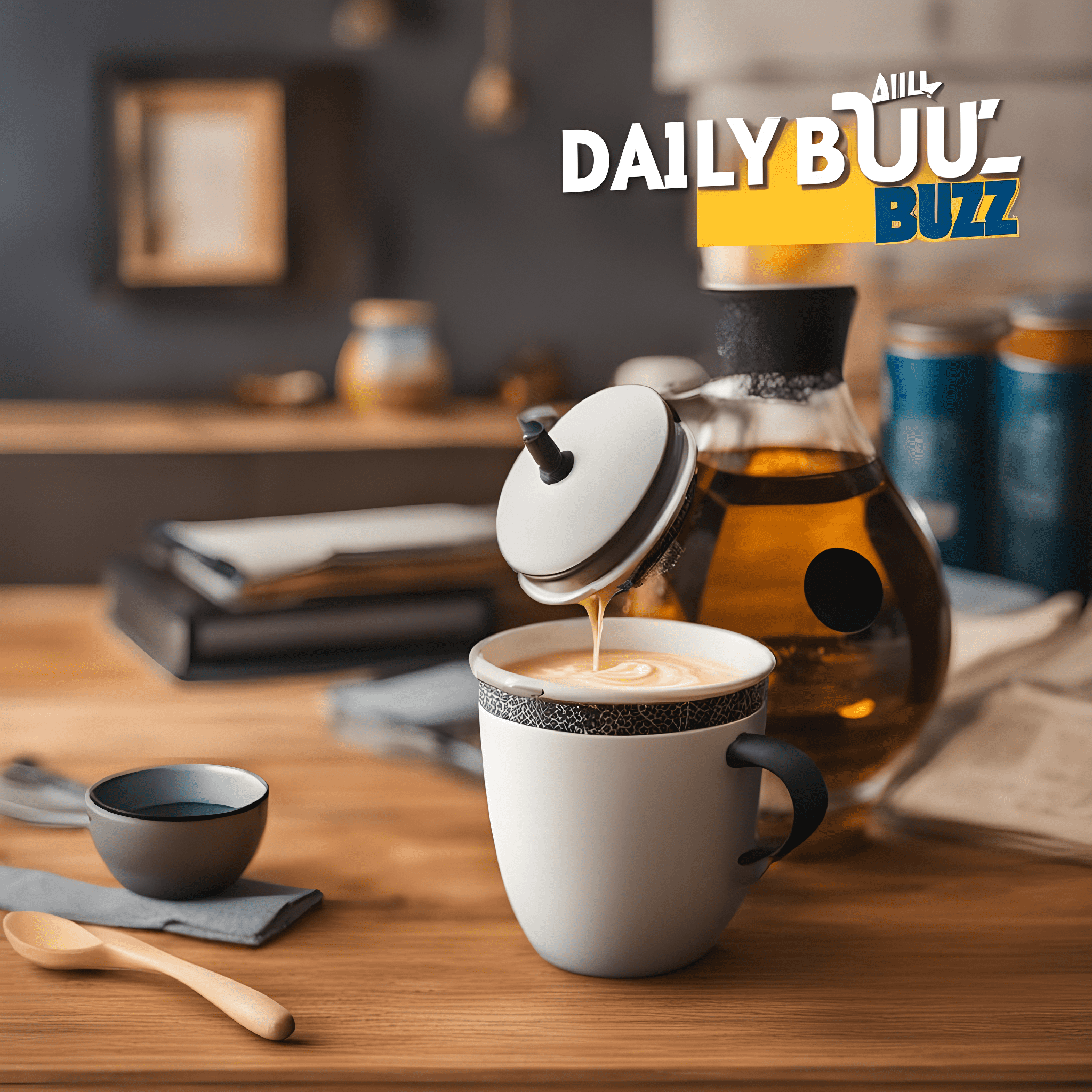


A team of researchers from Ashoka Trust for Research in Ecology and the Environment (ATREE) and Felis Creations Bangalore recently discovered a unique and beautiful blue-coloured ant species, Paraparatrechina neela, in the Siang Valley of Arunachal Pradesh. The findings were published in the journal ZooKeys, and the researchers have named the species as a tribute to its rare metallic blue colour, with only a few other ant species displaying this trait. The discovery was made during a resurvey of the region's biodiversity, a century after a previous expedition documented its natural history and geography.
Discovery of the Enigmatic Blue Ant: Paraparatrechina Neela
In the verdant valleys of Arunachal Pradesh, India, a team of researchers has unveiled a captivating discovery—a vibrant blue ant species named Paraparatrechina neela. This remarkable creature, found in the Siang Valley, is a testament to the untold biodiversity hidden within the region's ecosystems.
Background
The Siang Valley has long been known for its rich natural heritage. In 1911-1912, a British expedition led by F.M. Bailey documented the region's flora and fauna, providing a baseline for subsequent studies. Over a century later, researchers from the Ashoka Trust for Research in Ecology and the Environment (ATREE) and Felis Creations Bangalore embarked on a resurvey of the area, seeking to understand changes in biodiversity over time.
The Blue Ant: A Rare and Enigmatic Discovery
During their resurvey, the researchers stumbled upon a peculiar sight—a colony of vibrant blue ants. Further examination revealed that it was an undescribed species, distinguished by its metallic blue coloration. This remarkable trait is uncommon in ants, with only a handful of other species exhibiting similar hues.
The researchers named the new species Paraparatrechina neela, a tribute to its distinctive color. The discovery was published in the journal ZooKeys, highlighting the significance of the finding.
Top 5 FAQs and Answers
Q1: What makes Paraparatrechina neela unique? A: Its vibrant metallic blue coloration, which is rare among ant species.
Q2: Where was the species discovered? A: In the Siang Valley of Arunachal Pradesh, India.
Q3: Who discovered the species? A: A team of researchers from ATREE and Felis Creations Bangalore.
Q4: Why is the discovery important? A: It highlights the rich biodiversity of Arunachal Pradesh and contributes to our understanding of ant diversity.
Q5: What are the next steps for research on Paraparatrechina neela? A: Researchers will study the species' ecology, behavior, and genetic relationships to shed light on its evolutionary history and conservation needs.
Conclusion
The discovery of Paraparatrechina neela is a testament to the enduring beauty and wonder of nature. It reminds us of the vast and largely unexplored ecological treasures that lie within our world, waiting to be unveiled. With continued research and conservation efforts, we can protect these precious ecosystems and ensure their legacy for generations to come.

Prime Minister Narendra Modi launched a groundbreaking research, development and innovation scheme that will provide a boost to the flourishing ecosystem of innovation in India. In his address at the Emerging Science, Technology and Innovation Conclave, PM Modi highlighted the crucial role of science and technology in driving transformation and emphasized on India's significant progress in the field. He also acknowledged the remarkable achievement of India's women's cricket team and expressed confidence that their success would inspire the country's youth. Attendees included renowned scientists, innovators, and distinguished guests from both India and abroad.

Indian Prime Minister Narendra Modi inaugurated the Emerging Science and Technology Innovation Conclave (ESTIC) 2025 and launched the Rs 1 lakh crore Research Development and Innovation (RDI) Scheme Fund. The scheme aims to strengthen the private sector-driven research and innovation ecosystem in the country and has a total outlay of Rs 1 lakh crore over 6 years. ESTIC 2025, gathering over 3,000 participants, focuses on 11 critical thematic areas including Artificial Intelligence, Quantum Science and Technology, and Space Technologies, providing opportunities for collaboration and reinforcing India’s science and technology ecosystem.

In this edition of Health360, a renewed debate over the alleged link between vaccines and autism is sparked by tech mogul Sridhar Vembu's endorsement of a questionable study. Despite reassurances from the medical community backed by data from the WHO, doubts continue to persist, leading to potential harm to public health. The program also delves into the alarming rise in back pain cases in India and explores new treatments.

In an effort to fight the ongoing air pollution crisis, Delhi conducted its first-ever official cloud seeding operation led by IIT Kanpur. The operation involved a small aircraft dispersing specially designed chemical flares into the atmosphere to create rain. While experts say rainfall could occur within 15 minutes to 4 hours, the actual timeframe depends on various factors such as wind direction and moisture content. If successful, the government plans to continue the operation in the coming days.

In the quest for stronger, luscious hair, we often overlook the importance of nurturing the roots. Fortunately, Ayurveda has long stressed the significance of this practice, which has now been backed by modern science. Studies have shown that herbs like Bhringraj and Amla can activate hair follicles, promoting new growth and delaying greying. Fenugreek, Neem, Hibiscus, and Ashwagandha are also found to be beneficial in strengthening and nourishing the scalp, resulting in thicker and healthier hair.

A college student shares her personal journey of becoming a vegetarian, despite facing challenges and health concerns. She then delves into an ethics class she took, where the concept of marginal cases were discussed. Following an article by philosophy professor Alastair Norcross, she concludes that even though individual action may seem insignificant, refusing to consume factory-farmed meat holds moral significance due to the potential to prevent immense suffering for animals.

On October 24, the global community commemorates World Polio Day to honor the legacy of Dr. Jonas Salk and the efforts of countless individuals and organizations in the fight against polio. This highly contagious and potentially deadly disease, once a widespread epidemic, is now largely preventable thanks to the development of a life-saving vaccine. India's successful eradication of polio serves as a testament to the importance of strong vaccination programs and collaborations in public health initiatives.

As winter arrives in India, so does the hazardous air pollution. Delhi NCR's AQI has already crossed the 400 mark, making it crucial to invest in air purifiers, especially after Diwali. Dyson, Qubo, HomePure, and Philips have launched high-quality air purifiers with advanced features to tackle different types of pollutants and create cleaner indoor air. With prices ranging from Rs 5,000 to Rs 1 lakh, these purifiers are a practical and timely purchase for a healthier living.

In a recent family vlog, Indian celebrity couple Shoaib Ibrahim and Dipika Kakar shared their "natural" hair care routine for their son, using a homemade mask made with rice flour, flax seeds, and coconut oil. However, experts warn that what works for adults may not be suitable for babies, whose sensitive skin and scalp could react to the ingredients. While the ingredients may improve hair texture, they do not necessarily promote hair growth. Instead, a healthy diet and good scalp care are more important in maintaining healthy hair.

A recent consumer study has found multiple brands of soft contact lenses in the U.S. to contain "forever chemicals" that can be harmful to both the body and the environment. The study, conducted by the nonprofit organization Environmental Health Sciences, tested 18 varieties of popular contact lenses and found all of them to contain markers for PFAS. Brands such as Acuvue, Alcon, and CooperVision were among the list of affected products. This news serves as a cautionary lesson on the potential risks of overusing contact lenses.